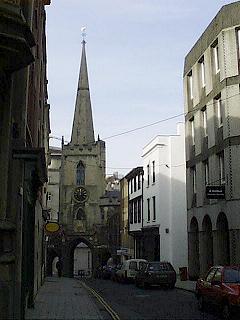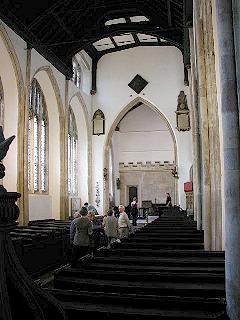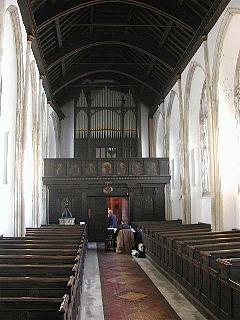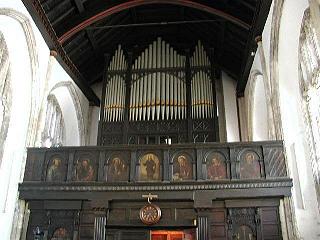|
The present church dates from the 14th century,
and the cityís North Gate forms the lowest stage of the tower
and spire.
The building of St Johnís coincided with a period of great
prosperity for Bristol. Walter Frampton (died 1388), who was mayor
of the city three times, founded the church, and his splendid
monument stands in the chancel. His effigy lies on a tombchest
decorated with heraldic shields, with a long-tailed dog at his
feet.
Other monuments in the chancel, and in the early 14th century
vaulted crypt beneath, testify to the wealth and business activity
of the city, in mediaeval times and later. See, for example, the
alabaster tomb in the crypt of a merchant and his wife, with their
ten children represented in panels below.
The interior of the church is impressively tall and graceful, with
fine fittings dating mostly from the 17th century. Christ
Church, known in the twelfth century as Holy Trinity, was one
of the three crossroads churches - the others being St Ewen's and
All Saints - but lies at the apex of the north-east quadrant and
may therefore represent an extension northwards from the probable
(?tenth-century) planned Anglo-Saxon town.
A fair was held at the feast of Holy Trinity in
the twelfth century at Bristol, where the church of Holy Trinity,
with Norman, if not Saxon fabric, is recorded from 1147.
The 18th century was a time of change. Christ
Church, which had existed for hundreds of years on this Wine
Street/Broad Street corner, was demolished and a new church built
on the site to William Paty's design.
The nearby church of St Hoyan or Ewen in Corn Street had been
closed, (it was pulled down in 1820 for the Council House) so that
dedication was combined with it. Hence the rather clumsy title of
Christ Church with St Ewen.
The interior of the church has a particularly fine gilded ceiling.
The organ was recently rebuilt.
See the Churches Conservation Trust web site here.
|







